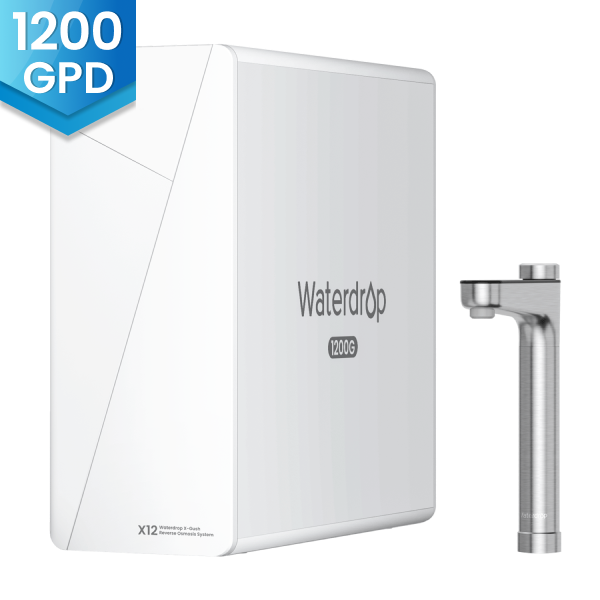Toxic Chemicals Connected to Ohio Train Derailment Leave Health Concerns
by Dr. Jonathan Doyle - Updated April 04, 2023
There was a freight train derailment and explosion in East Palestine, Ohio, United States, on February 3, 2023. The train, carrying hazardous chemicals, including vinyl chloride, was reported to have derailed before causing a fire that lasted for several days and was eventually managed into a controlled burn on February 6.
Emergency crews initiated a contained burning and release of harmful chemicals to ensure no further explosion. However, this led to the release of hydrogen chloride and phosgene into the surrounding air. It took the concerted efforts of emergency response teams from three states to successfully evacuate residents within a 1.6km radius of the incident. Fortunately, no loss of lives or severe injuries was reported.
The Cause of The Derailment
On February 3, 2023, up to 50 train cars were reported to have derailed around 8:55 pm in East Palestine, a town near the Ohio-Pennsylvania border where over 4,800 people reside. About 20 of these cars were said to carry hazardous materials, mostly vinyl chloride, combustible liquids, benzene residue, and butyl acrylate. About two days after the incident, the National Transportation Safety Board publicized its initial findings, which identified a mechanical problem on the axle of one of the cars as the leading cause of the derailment.
According to a former Federal Railroad Administration official, the absence of electronically controlled pneumatic brakes in the trains contributed to the high severity of the accident.
Health Hazards Arising from The Accident
Several days after the accident, residents of the East Palestine town of Ohio are still concerned about the potential harms of the toxic substances that may still be present in their now-empty neighborhoods. Experts have also raised alarms about the dioxins that could be produced from burning the vinyl chloride and residual unburned vinyl chloride. While the gaseous pollutants can dissipate in the air faster, dioxin may remain persistent for days in the atmosphere.
What is Vinyl Chloride?
Vinyl chloride is used to make the polyvinyl chloride hard plastic resin found in all plastic products. It is an essential component of most plastic materials, including car parts, furniture, credit cards, and piping. However, there have been increasing concerns about the association of vinyl chloride with liver cancer and other types of cancer, based on reports from the National Cancer Institute.
According to a recent study, PVC pipe makers who breathed in vinyl chloride were diagnosed with rare liver cancers. “If you worked longer, you had a higher risk, and if your exposure levels were high, you had a higher risk,” said Ruth Lunn, a carcinogen researcher at the National Institute of Environmental Health Sciences.
For context, vinyl chloride is 12x less toxic per molecule than DDT, the popular US-banned insecticide. However, it is more dangerous per part than natural gas and ammonia, based on the federal regulations that stipulate the acceptable levels of these chemicals in the atmosphere.
Can These Chemicals End Up In Water?
Another concern for residents would be the possibility of these chemicals from the controlled burning of the derailed train wreckage ending up in their groundwater. While this is not impossible, it would depend on the amount of these chemicals and the extent of the spread of the plume.
The location of the accident makes it improbable for substances from the derailment to affect the groundwater in the area. However, according to agency officials, there is a chance that some of the chemicals may have spilled into one of the streams around the town, as well as drinking water wells around.

According to the Ohio EPA, tests conducted on five wells that supply drinking water to the village revealed no presence of contaminants related to the derailment. However, the Ohio Department of Natural Resources has reported that over 7 miles of streams have experienced the deaths of more than 3,500 fish, primarily smaller ones.
In response, Ohio Republican Senator JD Vance has challenged EPA Administrator Michael Regan to drink the local water to prove it is safe, expressing skepticism about the water supply and advising residents to drink free government-provided bottled water instead.
Nonetheless, research has indicated that bottled water may not be the optimal solution, as it can contain more bacteria than tap water, with some brands exceeding acceptable limits by a factor of 100.
Dealing with Toxic Chemicals in Drinking Water
The EPA’s Toxic Release Inventory showed that about 38,000 lbs of vinyl chloride had found its way into water and land from 1987 to 1993. The major sources of vinyl chloride were plastic materials and resin industries, and Delaware and Louisiana recorded the largest releases during this period .
Treating vinyl chloride is possible and has been proven by using methods like granular activated carbon and packed tower aeration. Installing an activated carbon filter can effectively reduce the concentration of vinyl chloride in water.
As an organochloride, vinyl chloride is not the only organic matter existing in the groundwater. Before pumping into your house, the source water will go through a series of municipally regulated water treatment processes. However, contaminants such as chlorine, fluoride, copper, iron, lead, arsenic, pesticides, herbicides, uranium, and more are still common in tap water, causing potential health concerns.
With city water crisis cases being reported occasionally, more and more American families realize the importance of using water purification devices, and the most efficient and powerful one is surely the reverse osmosis system. Take the under sink RO system Waterdrop G3P800 as an example, the UV sterilizing light of the system can be automatically turned on when water flows by and has the sterilization rate up to 99.9%. Its 9-stage filtration process can effectively reduce impurities in water, including:
- TDS
- PFAS
- fluoride
- heavy metals like chromium, arsenic, iron, radium, and calcium
- salts like nitrate and chloride
- lead
In addition to vinyl chloride, other contaminants are also of concern after the derailment and explosion, including isobutene, butoxyethanol, butyl acrylate, dioxins, and ethylhexyl acrylate. Although these chemicals are not included in the NSF standards, according to the reverse osmosis membrane technology manual, Waterdrop RO systems can greatly reduce these substances to a very low rate.
Why Should You Drink Filtered Water?
Over the years, individuals and families have adopted different forms of water filtration to get cleaner water from contaminated water sources. There have also been consistent changes and upgrades to existing systems to improve efficiency and convenience. For instance, ultraviolet, carbon, ceramic, and reverse osmosis water filtration result from systematic improvements over time.
Out of the filtration methods mentioned above, the reverse osmosis water filtration method remains the most efficient at providing pure drinking water from contaminated water. This filtration method uses a semi-permeable membrane to separate pure water molecules from contaminants, highly effective in reducing impurities larger than 0.0001 micron.
An RO filtration system will not only remove the most harmful contaminants from your water source but also eliminate foul odor and bad taste from the treated water. The systems are easy to install, operate, and maintain. Once you connect it to your existing water supply, you can rest assured of never running out of safe drinking water. In addition, it is an economical water source compared to bottled water.
Finally…
Nothing else can replace clean, healthy, and great-tasting drinking water. It keeps you hydrated, improves your mood, and helps you stay healthy. There is also considerable peace of mind knowing your family is not at risk of severe diseases or malnutrition caused by contaminated water.
Contaminants Detected in Fruitland Water
Special
Service District
30
Contaminants
EXCEED EWG HEALTH GUIDELINES
EXCEED EWG HEALTH GUIDELINES
30 Total Contaminants in Your Water
Water Provider
Fruitland Water Special Service DistrictPopulation Affected
120,000Water Source
Ground waterExceeds Guidelines
Others Detected














